Andy Hertzfeld苹果设计师与Google+
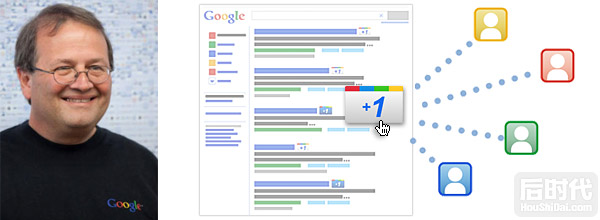
Andy Hertzfeld安迪·赫兹菲尔德从苹果设计师与Google+
安迪·赫兹菲尔德(Andy Hertzfeld) (born April 6, 1953),Mac核心操作系统和用户界面工具箱的主要作者。Andy Hertzfeld曾是Machintosh(1984)小组的核心成员,他于1979年加入苹果,负责许多Mac的重要软件。苹果的名片上,他是“软件魔术师”。今天,他作为一名软件工程师在Google工作。
Andy Hertzfeld (born April 6, 1953) was a member of the original Apple Macintosh development team during the 1980s. After buying an Apple II in January 1978, he went to work for Apple Computer from August 1979 until March 1984, where he was a designer for the Macintosh system software. Since leaving Apple, he has co-founded three companies: Radius in 1986, General Magic in 1990 and Eazel in 1999. In 2002, he helped Mitch Kapor promote open source software with the Open Source Applications Foundation. Hertzfeld joined Google in 2005 and was lead designer on Google+, introduced in 2011.
Andy Hertzfeld出生于1953年4月6日,在费城西郊长大。Hertzfeld上高中时开始对计算机产生兴趣,他当时写的程序包括学校舞会的约会程序。高中毕业后,他进入布朗大学,学习物理、数学和计算机科学,并于1975年取得计算机科学学位。1979年,Hertzfeld获得加州大学伯克利分校计算机科学硕士学位。研究生毕业后,Hertzfeld加入苹果电脑公司(Apple Computer),从事Silentype打印机(译注:苹果公司推出的第一款打印机,1979年宣布,1980年3月发布,打印机固件由Andy Hertzfeld编写。)、Apple III操作系统及其他产品的开发。1981年2月,他作为第二名程序员加入Macintosh开发团队,参与项目开发,并成为Macintosh操作系统的主要开发人员。最近,Hertzfeld离开苹果公司,开始自己单干。之后,他在Macintosh上开发了Switcher(译注:当时Macintosh系统软件还不支持同时运行多个程序,Switcher允许Macintosh用户同时打开多个应用程序,并在这些程序之间切换,提高工作效率。),另外还有一款低成本高分辨率的数字化仪ThunderScan(译注:一个低成本解决方案,通过将打印机色带替换成光学传感器把ImageWriter打印机改装成高分辨率的扫描仪,外加独创的辅助软件,完成图像扫描。
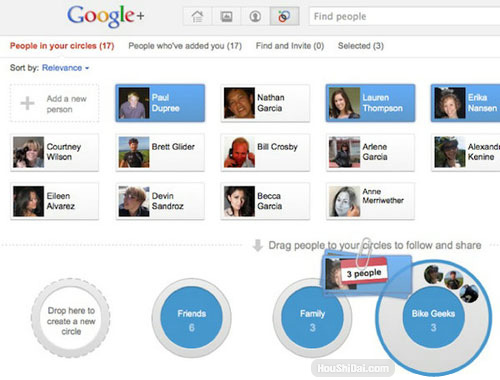
Google+ Circles动画界面设计
Andy Hertzfeld从2005年开始到Google工作,得益于他,我们才看到了如此有爱的Google+界面,正是他领导了该项目的设计工作。他在1979到1984年为Apple工作,曾经是最初Mac软件团队的关键设计师。
In The Plex一书里有这么一段描述了Andy Hertzfeld的工作:
多彩的动画、拖拽的魔法、轻快的触摸界面、Circles看起来就像是一个经典的Apple软件,而不是一个Google品牌的应用。毫无疑问,它幕后的关键界面设计师就是传说中的软件艺术家Andy Hertzfeld。
Google+ looks… a little different. Almost as if it didn’t even come from Google. And those drag-and-drop circles? Luscious. Turns out, there’s a reason for everything, and he goes by Andy Hertzfeld. According to an investigative piece put up by Wired, Andy’s actually credited as being the “original Mac guy,” responsible for software and user interface design while working for Apple between 1979 and 1984. He picked up a new role at Goog in 2005, but according to the report, “he had previously felt constrained because its design standards didn’t allow for individual creativity.” That all changed with Emerald Sea, a diddy that would eventually become known as the search giant’s most ambitious foray yet into the wide world of social networking. It’s bruited that Andy was given the freedom to go wild whilst designing Google+, and it shows — the interface throughout is about as intuitive as one could ever hope. ‘Course, it takes more than good design to seal a project, but there’s no doubt that this is one heck of a start. The rest of the story? Tucked away in that source link, just south of here.
Google+功能设计上和facebook类似,核心的内容就是:在不同的圈子(circles)分享信息流(Stream)。圈子和圈子之间有交集,但在圈子设计上google+比facebook更看重圈子的“隔离”,比如你有两个圈子:泡妞圈和同事圈,你一定不想在泡妞圈的信息分享到同事圈里去吧。一个人生活在不同的圈子里,在不同的圈子里有着不同的身份,在不同的圈子你说表现性格层面也会不一样,如何在个人隐私和信息分享之间找到一个平衡点,是google+的核心理念。
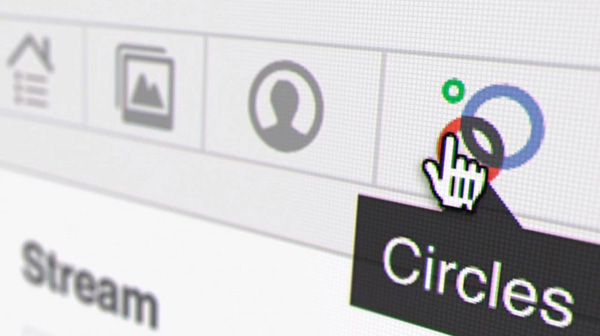
Google+是什么?
Google+是Google新近推出的一项社交网络服务,2011年06月29日正式开放试验,这是新执行长拉里·佩奇(Larry Page)重掌兵符后的重大任务。该服务是一层整合了Google所有社交服务(诸如Google Profiles 和 Google Buzz),还加入了很多新的功能,比如小圈圈(Circles), 多人视讯聊天(Hangouts), 话题灵感(Sparks), Huddles以及行动社交应用(Mobile)
Google+为什么推出
Google+推出可以说是针对Facebook提出的 针对Facebook过于开放的缺点,以隐私功能作为区分点,让用户可以在不同的朋友圈里分享资讯。Google+的小圈圈功能,能把好友分成不同的群组,分别传送不同的讯息,也正中了Facebook的弱点
Google+可以做什么?怎么玩?
下面为大家介绍Google+的主要功能玩法
“交际圈(Circles)”的功能:用户可以通过交际圈来选择加入和组织群组从而达到最优的共享模式,你只需从一份推荐联系人的名单(来自于你的Gmail或Google通讯录)中选择合适的人选,然后将他们拖进你指定的交际圈中。也就相当与建群
工具栏:它作为一个工具栏存在于所有Google网站的顶端,你一旦设置了自己的交际圈,就能通过工具栏极为方便地将任何Google网站分享给任何交际圈中的人这个工具栏以同样的形式存在于Google的扩展浏览器和手机版本等等
“火花(Sparks)”功能:使用火花,你可以输入一个所感兴趣的东西,Google会在网上帮你找出他们认为你可能会关心的内容,Google可以搜索出任何相关的博客、视频和书籍。如果其中有你喜欢的,你可以将其收藏。你也可以在其他人的收藏区中看到他们所喜欢和谈论的东西。
Instant Upload 「瞬时上传」:把人们连接起来。人人口袋里都有一只相机 这项功能依赖于通过Android设备拍摄照片或者视频。通过一个新的应用,你拍摄的内容会通过后台自动上传到Google+,储存在一个私人相册里(之后通过单次点击你就可以分享它们)。
Huddle「群信」:这个功能实质上是一个可以在Android,iPhone和SMS短信之间跨平台的群体消息应用,让你能和某些圈子里的人联络。
Hangouts(巢穴):很多人喜欢叫它 闲逛 我觉得很贴切 。Hangouts来由也很有趣 ,Google+团队通过考虑邻居坐在门廊上的场景获得了解决这个问题的启发。如果你的邻居坐在他家门口,你就知道或许他们有兴趣聊两句。实际上,直接走过去不说上两句都显得粗鲁。考虑着这样的场景,Google+「闲逛」试图通过让其他人知道你有兴趣聊天来解决视频聊天的社交性问题。如果你已经在一个圈子里开聊了,这个圈子里其他人会收到”出来逛逛“的提示。最多可以容纳10个人视频群聊。在一个特定时间,控制对话的人会被系统识别出来并被显示在中间的大屏幕位置,这样谈话变得更加容易(微软和Skype都拥有同类的技术),就像是有个编辑坐在屏幕后面,随时对视频进行剪接。
整个Google+看起来似乎有些庞杂,但是核心思想是要把一切结合在一起。这要通过顶部工具栏,移动应用和网页来实现。
Google+相关
开发团队:
Google+是由 Gundotra(后附图)和Bradley Horowitz负责,他们俩在Google的地位相当重要,跟Android之父有的一拼,一直以来Google+都处于谷歌研发的高度机密。
Andy Hertzfeld在LowEndMac的采访中,他表示,自己认为OS X有时过于注重视觉外观,他会更看中易用性。目前,他在Google负责编写JavaScript,而他觉得Google比苹果更加信任自己的雇员。他使用三种主要的平台——Mac, Windows, Linux(,做Javascript,当然要考虑不同平台的不同浏览器啦——译注),但苹果是他的首选。现下,他使用的是全新的30吋显示器Mac Pro。
Andy认为,Sculley在八十年代定价过高,没能抢占市场空白,才使得后来的苹果陷入困境。而苹果公司创业前期的恩恩怨怨,他早已写入他的书Revolution in the Valley里面了。虽然他离开苹果多年,依然和Steve Jobs保持很好的关系。他最骄傲的,就是在1986年,于自己一手创立的公司——Radius公司——里找到一种方法把几台显示器连在一台主机上,即把所有显示器放在同一个坐标空间里。谈及现在,他认为苹果在针对微软、戴尔和惠普的竞争中处于有利地位,如果付诸实现会变得很有趣。
53岁的Andy Hertzfeld还愿意写大量的代码,但他认为自己已经有点老了。由于记忆衰退和精力下降,他似乎更愿意写小说——这是他青年时的梦想。
据国外媒体报道,到明年一月,苹果的Macintosh电脑将迎来其25岁生日,国外某网站采访了一位苹果的老员工,也是Macintosh电脑的设计者之一的Andy Hertzfeld。然而他现在已经在不再呆在苹果,正效力于谷歌。
Andy Hertzfeld最近正在写一本叫《硅谷的一场***》的书,他谈起了自己对Mac电脑的看法:如果乔布斯一直都待在苹果会怎样?以及他在苹果和谷歌长时期工作感受到的这两个公司的相同点与不同点:
“苹果与谷歌从某些方面来说非常相似,首先它们都想重建游戏规则,它们不想按常规去办事而是想采用更好的方法——对什么事都是如此。不仅在技术方面如此,而且在工作流程、工作环境,所有的一切都必须是独特和更好的,所以它们在这方面很相象。
它们的不同点之一在于对员工是否高度信任。即使从内部来说苹果也是个保密性很强的公司。比如说,为Macs电脑工作的人对于正在研发的新iPod毫不知情。而谷歌在公司内部则非常开放,一旦你成为了谷歌的一员,你就可以接触几乎所有的信息。
苹果早期员工很特别的一本书:硅谷大革命
当《硅谷大革命》出来没多久,我就曾在#osxchat上听了很多关于这本书的恐怖故事。后来我到天珑自己翻了一下,其实觉得还好,字型用的虽然又多又乱,但至少标题和内文都还能看。于是一向是内容至上的我,还是乖乖掏钱买下了这本书。
结果回来没多久,就看到了这一页:(图的来源是digdog的flicker)这页真是太不可思议了……。很难想象O’Reilly怎会容许这种书上市。虽然书的内容是最重要的,但书毕竟是要用眼睛看的。看到这种一页里面杂乱无章地用了近十种字型,真是无言以对。
原文版虽然也用了很多字体,但看起来一致多了,也不会觉得那不舒服。相较之下,我觉得中文版的美编只是随便抓了几种字型就套上去,完全没有抓到原书想要表达的感觉。虽然这本书长得不太好看,但内容还是蛮不错的,可以让我这种没见过旧型麦金塔的人看到很多过去的趣事。
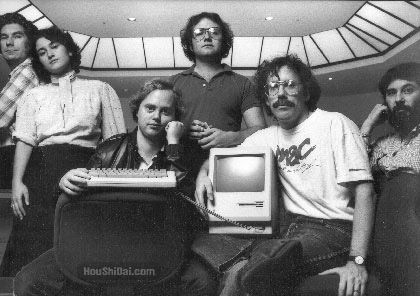
苹果设计师访谈:
Make no mistake. Andy Hertzfeld, Eazel developer and Macintosh forefather, is an Open Source zealot. Forged in the fires of Steve Jobs and Bandley 3, Andy’s leading the team to build a kinder, gentler interface for our favorite operating system. I got the opportunity to speak to Andy last week, and I learned a lot about the challenges and victories of thinking different with Linux.
Slashdot: Tell us what you’re doing now, and how it differs from your work at Bandley 3.
Andy: What’s similar about it is we’re working on another revolution, trying to take usability to the next level — it’s different in that we have the network now. With the Macintosh, we were able to solve a different class of usability problems, but we really weren’t able to get at some fundamental issues of system management and robustness. Now, with the network, it gives us the ability to address those.
Slashdot: How is it, working on a hyped-up technologically advanced version of what you’ve done in the past?
Andy: I don’t know if that’s really true or not. There’s a level of it that’s similar, but it is twenty years later, and the possibilities are vastly different. Sometimes I stop and think about when I was working on the Macintosh, it seemed like 128k was a lot of memory, because we were initially trying to fit everything into 64k. Nowadays, 128k is lost in the noise, it’s a rounding error. There are possibilities to do so much more than we ever could before. On the other hand, the original Mac prized simplicity, and some of that simplicity has been lost. The Mac has gone, in certain respects, downhill on the ease-of-use curve over the years, and part of that is the natural evolution of a system to order to fulfill the complex and varied needs of it’s users. There’s just a tendency in the world toward complexity. On the other hand, one of the things distressing me is the lack of innovation over time. Just your very question indicates that even though the hardware now is thousands of times more capable than what we had when we were working on the original Mac, the software paradigms have not advanced in the same way.
Slashdot: The whole Linux craze, you’ve got Windows, and ‘Ooh, look at this new fighter on the horizon.’ But it’s UNIX.
Andy: Well, but the new fighter on the horizon, from my point of view, is not so much that it’s UNIX, but it’s a new and better business model, a new and better paradigm for developing software, and that’s really exciting.
Slashdot: How did you get involved in the Open Source/Free Software movement?
Andy: When I took off from General Magic in 1996, the Internet was exploding, and I just wanted to learn about it. So, I set up an ISP at my house, got a T1 line, and set everything up myself so I could learn about how things are put together. But also, to justify that T1 line, I started doing pro bono projects of various kinds. I was happily puttering along with those kinds of projects when in January of 1998, the Mozilla announcement caught my attention in a big way. That led me to Eric Raymond’s papers, and an epiphany, you know, a moment of insight, where I realized that it solved the structural problems in the software industry. I’d been depressed about the lack of innovation and the stagnation and the anti-user framework that the software industry had fallen into. The idealism of the computer industry had led to this cul-de-sac, where no one was really happy with their machines. The basic problem is that the applications want to converge on a common system infrastructure. That’s what’s good for the applications, good for the users, good for everyone, to be built on top of a common system software base. The problem is that when that common system software base is controlled by a proprietary interest, the company that controls it necessarily becomes anti-innovative. In order to maintain their control, they are at odds with the users and the developers. I had realized that, and I didn’t see a way out until reading Eric Raymond’s papers, and learning about the successes of Linux, Apache, et cetera. I saw that if that common infrastructure could be owned by the community on something like the GPL, the problems are solved. You can have a healthy software industry, where anyone who wants to innovate has equal footing. That was really exciting to me, and I saw it as a call to action. The first step was converting my Web servers over to Linux, I started installing all sorts of software, playing around to see the state of usability. The first one I did was KDE, about six months later, I started exploring Gnome, and just getting up to speed in the space which took about six months of just exploring around, and another six months actually programming on gtk to understand it’s strengths and limitations. Around the very beginning of 1999, Bart Decren was the founder of an organization in East Palo Alto called ‘Plugged In,’ which was one of the few organizations trying to address the digital divide, trying to fix the paradox that right next to Palo Alto, one of the most affluent and high-tech communities in the nation, was this little place called East Palo Alto, which was one of the least affluent and high-tech places in the nation and Bart started an organization to try to bring technology to them. So, I supported Bart in those efforts over the years, and he was one of the people I respected the most. He had all the qualities of a classic entrepreneur, but he was applying them for public good instead of his own private interests. So, when Bart came to me and said he had run his course at Plugged In and was looking for something new to do and just wanted my advice, I told him about my excitement about free software. My plan was not to start a company, it was to start an Open Source project. Bart surprised me when he came back to me, a month or two later, and he said, ‘I figured out what I want to do, I want to start an Open Source company with you.’ That was around April of 1999, so we started putting together a plan, and what really made Eazel happen was the realization that in order to create ease-of-use on the desktop in a broad way, we needed something to fund it. We wanted to do Free software, but we needed some sort of business model.
Slashdot: Someone’s gotta pay the bills.
Andy: Yeah, so the real ‘eureka’ moment was when we realized that the GUI is only part of the problem. The real problem vexing users is system management, as well as lack of coverage on the GUI, and lack of fit-and-finish and all of that, as well as the lack of innovation. We had ideas for years that have just not made their way into the main platforms because things had stagnated. Anyway, the system management problem seemed to be the real opportunity that it would take a company to address, and it could have a potential business model behind it because of the ongoing nature of system management. What needed to be done was to create a service that could manage people’s systems for them, and that we could charge people a subscription-based fee for and use that revenue to fund our efforts at making the GUI really great on the desktop. So, that’s what happened. That all came together in the summer of last year, we got an office in August, or early September.
Slashdot: Tell us about the technical aspects of what you’re doing. I don’t know how much time you’re spending in front of a compiler everyday.
Andy: Oh, I’m in there programming every day and every night, like I always do.
Slashdot: Well, tell us what you did this morning.
Andy: Well, the very first thing I do when I come into work after I put my backpack down is to go get a Diet Coke. Usually, I read the Web, I read my E-mail. The first thing I did this morning was work on our test database. We’re using Bugzilla to manage all the various tests that need to be done with the project, so I go over that to close some out from the previous night, write some new ones, and then look over which ones I should work on today. Most recently I’ve been working on what I call the ‘novice home’ directory, which is the place where novice users go and there’s a nice set of links for them to access the functionality of the program.
Slashdot: Tell us what excites you about Eazel.
Andy: One of the really exciting things to me about Eazel is the great team that we’ve built and are continuing to build here. One of the very best things is getting to work with Bud Tribble again, who was my boss on the original Macintosh project.
Slashdot: The original Macintosh project is usually defined as a cult of personality led by Steve Jobs.
Andy: Well, it varied over time. The Mac group got a reputation for being really spoiled, but that was in the very late stages of the project. The Mac team was paid less than the average people working at Apple initially, because we were pretty young and out of the mainstream. We had a tiny little office above a gas station, that’s the place where the Mac project really took root, we called it Texaco Towers, and we weren’t spoiled at all really, compared to the rest of Apple. In mid-83, we moved into a fancy building, then they put the piano in …
Slashdot: You had the piano, you had Defender …
Andy: Yeah, Defender was actually partially due to me. Burl loved it. Burl was the hardware designer of the Macintosh, and he just loved Defender. We always used to go to Cicero’s Pizza, which was across the street, to play Defender in the afternoon. When we had the opportunity to buy a Defender game, we sprung for it. Joust was the other video game we had there.
Slashdot: How closely are you working with Helix Code, and how does that affect the hacking you do everyday?
Andy: Well, I’m not sure it affects the hacking we do every day very much, but we closely coordinate with them to make sure that the Gnome platform is coherent, and we try to avoid reduplication of efforts, so we have a process where the folks at Eazel have a conference call with Miguel and Nat usually every other week. It’s really fun. We almost became one company last summer. We had a lot of natural synergies, but there were enough differences that we decided to go separate ways, but we consider ourselves, I think both sides consider the companies to be siblings, so we each try to help each other wherever we can.
Slashdot: How much of your original Apple Macintosh design influence is finding its way into Eazel?
Andy: What I would say is that our design values have remained pretty consistent.What we think is important is the same. Essentially, making the user happy. Bill Atkinson, who is really the person I learned the most from on how to do good user interface, his one rule of user interface design is ‘make the user happy.’ What you do is put yourself in the shoes of the user, look through their eyes, and try to make things work from their perspective. That being said, one of the things we didn’t know how to do on the Macintosh, that we learned subsequently, is that it’s very important to user test. So, to make usable software, you have to take your best shot with your own empathy with the user, seeing the way the user sees, but then you have to test that against real users. You put them down in front of it with a video camera running, and you see where they ‘get it’ and where they don’t.
Slashdot: When a wirehead designs an interface for wireheads, that’s fine. The Linux command line works fine for wireheads. For that reason, it’s why the popular Linux interfaces don’t work well with people coming right from Windows.
Andy: One of the big problems in terms of usability and Open Source software is that no systematic user testing has ever been done. That’s one of the things we’re trying to change at Eazel.
The personal computer has come a long way since 1984. Microsoft has a vast marketshare of the desktop computer market, and most people are content with machines that don’t perform nearly as well as they could. With new ideology and a team of experienced developers, Eazel is helping to build something that Open Source and Free Software advocates have been waiting for. A computer industry for the rest of us.
Andy Hertzfeld:真正的艺术家靠作品说话
Andy Hertzfeld 原文链接:Real Artists Ship
作者:Andy Hertzfeld
译者:Esther
版权声明:本文可以任意转载,转载时请务必保持作者、译者署名的完整性。
1983年秋天,我们决定要在1984年1月24日苹果下一年度股东大会上宣布发行Macintosh。Twiggy盘驱动的失败差点让我们赶不上时间,不过索尼的新3.5寸盘解决了我们的全部问题,硬件剩余部分也都整装待发。九月初Macintosh ROM就已经完工,交付生产了。剩下的所有任务就是完成系统盘和我们的两个应用程序,MacWrite及MacPaint。
1983年圣诞假期时,软件组一直在辛苦工作。Finder尚未完成,还存在许多性能问题,尤其在两个软盘之间复制文件时,这个问题简直没完没了。还有若干集成测试要做,比如应用程序之间的剪切和粘贴以及应用程序与桌面附件之间的互动。新年即将来临,很显然,我们的时间不够了。
到一月的第一周,软件组24小时工作,测试处理发现的问题。大楼里的每位员工都被抓来当测试员,我们在公司吃了好几次工作晚餐,苹果给所有加班测试的员工买单[故事:爱上一周工作90小时的感觉]。
最后,离软件完成期限不到一周了,明摆着还有好多错误,我们无法试水。周五夜晚,我们说服自己还再需要一两周的时间解决现存的问题。Steve Jobs和Bob Belleville及Mike Murray一起在东海岸为发布做新闻会,所以我们安排了周日清晨的电话会议,向他报告这个失误。
Andy Hertzfeld等我们集聚在话筒周围,由我们的软件经理Jerome Coonen代表大家发言。我们早已筋疲力尽,而进展却很缓慢。还有些错误我们未能彻底弄明白,可在剩下的时间里我们可能也无法解决。Jerome提议我们在推出时向经销商发布“演示”软件,几周之后再用最终版本为所有客户升级。当我们屏住呼吸等待Steve回答,都觉得Jerome颇具说服力。
“不行,我们不可能有失误!”,Steve回答说。整个房间的人异口同声地惊叫起来。“你们已经为此工作了数月,再多两星期也不会有多大差别。你们还是做完了事吧。尽最大努力。最好回去工作!”
我们还是成功地挤出了几天时间,其实就是周末加班,然后把最后期限挪到周一早上六点,也就是工厂上班时,而不是周五下午。我们商量好回家休息,周一再回来上班,准备好最后冲刺。
最后一周是我有生以来最紧张的经历之一。Steve希望Bill Atkinson和我飞到纽约向Mick Jagger展示Mac,而我决定留在Cupertino帮助解决问题。有些人还要停下工作让《新闻周刊》和《滚石》等杂志拍照,这让团队中的其他人很不高兴,觉得自己被排挤了。有好几次,气氛相当紧张。
星期五终于来了,显而易见Finder和MacWrite都还有大量错误。Randy Wigginton带了一大袋巧克力,上面满是咖啡豆,这和大量的咖啡因饮料一起让我们在最后几天彻底放弃睡眠。我们开始进行循环发行,只有短短数小时之隔,每解决一个重大问题之后,又进行重新发布。
当新版本准备好时,我们都抢过来然后再次测试。周日半夜2点,我在剪辑板代码中遇到了错误。我想我知道可能是什么问题,可我太累了,就是不愿意处理。我假装没有发现问题,可Steve Capps一直在看我的表情,他知道有什么东西不对劲。我太疲惫了,甚至懒得掩饰;他就这个问题纠缠我,然后帮我修改,因为我自己实在太累了,压根做不了。
老照片凌晨4点,我们又做了一次发布,结果全盘皆错——甚至连平时稳若磐石的MacPaint都崩溃了。不过早上5:30我们的最后发行看上去好多了;最糟糕的问题似乎也偃旗息鼓了,我们想这可能真的是合适的发布候选者。
我们尽量集中精力反复测试最终版本,直至清晨6点,Jerome必须得开车把这个版本送到工厂去。它看上去相当不错,不过很快有人发现了可能导致演示取消的问题——在MacWrite插入空白盘时系统好像要待机——磁盘本来应开始格式化的,可却没有。我意识到它待机可能是在等一个事件,所以我伸手敲了空格键,格式化开始了。Jerome觉得问题太严重,肯定会影响发布,可他还是开车去工厂了,心想就算是演示版也得生产才行。
太阳已经升起,软件组开始解散回家休息。我们还不确定到底结束了没有,这么辛苦地工作了这么久之后,突然无事可做,感觉真得好奇怪。Donn Denman和我没回家,我们在沙发上恍恍惚惚地坐着,看着财务和市场部的同事在早上7点半陆陆续续地来上班。我们肯定成了一道风景线;每个人都能发现我们彻夜未眠(其实,我已经接连三天没回家也没洗澡。)
终于,8:30左右,Steve Jobs到了,他一见到我们,就问东西做好了没有。我向他解释了格式化错误,他觉得那不会影响演示,也就是说我们其实已经大功告成。早上9点,我开车回到Palo Alto家中,瘫倒在床上,想我得睡上个一两天。
 RSS
RSS

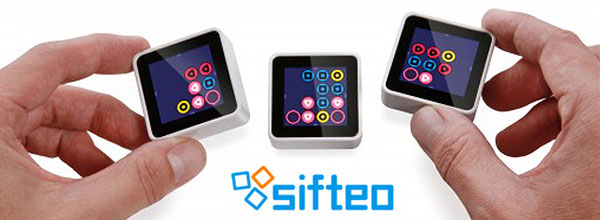
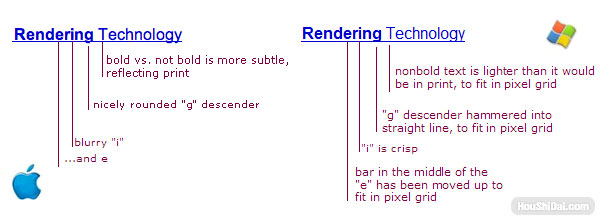
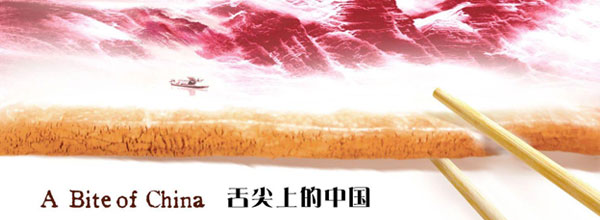

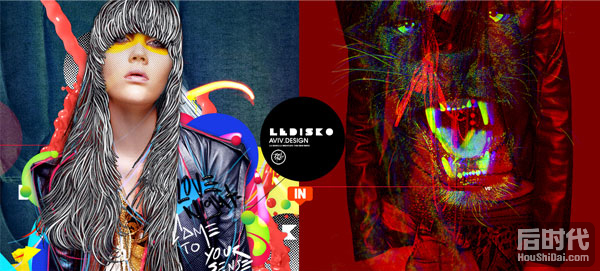

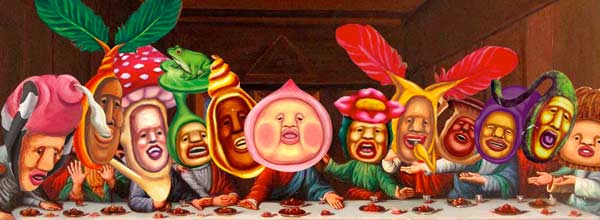
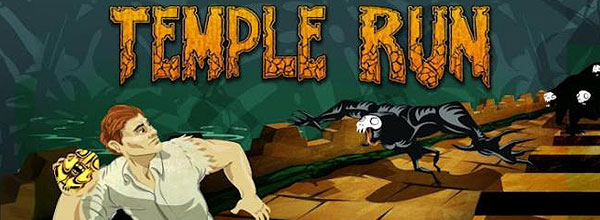

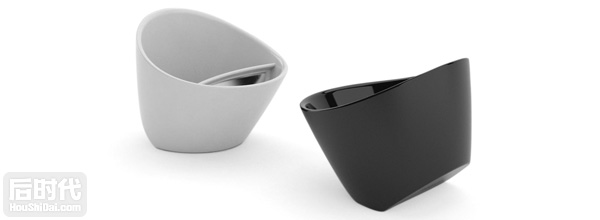
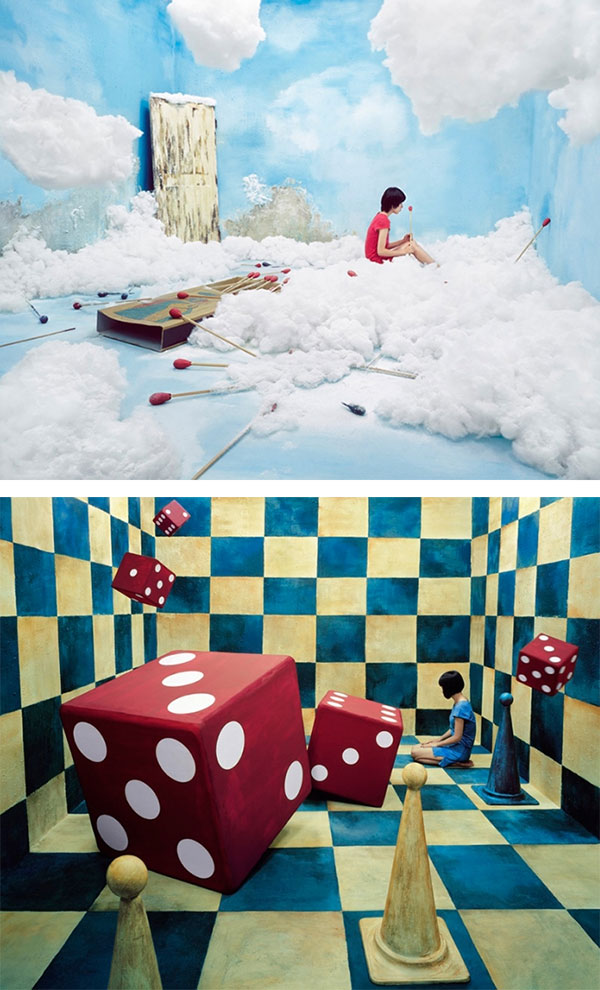
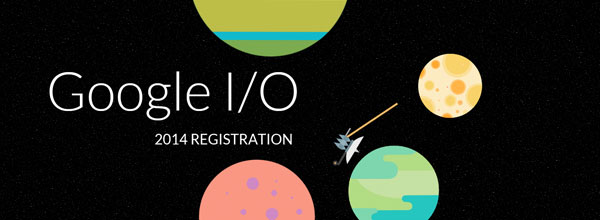

1 条评论了 “Andy Hertzfeld苹果设计师与Google+”
我开车回到Palo Alto家中,瘫倒在床上,想我得睡上个一两天。